During the summer holidays, we hiked around Mont Blanc. From cabin to cabin, through three countries, up and down over several thousand meters of altitude. This is the first post in a short series where we share our experiences about the trip, the practical details, the challenges, and the unforgettable experiences that awaited us at the mountain.
Written by Mette / Photo by Martin
Translated from Danish
“It’s been the worst winter”, the receptionist utters, shaking her head: “I’ve never seen so much snow in the 42 years I’ve lived here”. We have just arrived at the first hotel of the trip, and as we check-in, we chat with the hotel owner about our purpose of visiting the French Chamonix valley. And her response was not exactly what we were hoping for.
Three hours earlier we landed at Geneva airport, and after an hour and a half of transport we arrived at the alpine-idyllic Hotel de la Couronne. With a central location in the small mountain town of Argentière, the hotel is an optimal starting point for our hike around Mont Blanc. A trip of just under 170 km that passes through France, Switzerland, Italy, and above 2.600 m high mountain passes. The famous route has long been on our bucket list, and this summer we decided it was time to fulfill the travel dream.
Tour du Mont Blanc is one of the world’s most iconic hiking routes
“Around here, the snow has melted, but you have to be careful. Especially where you are going”, the receptionist continues. Her remark is no doubt well-intentioned but has the same effect as when the dentist notes that he has found a cavity. I don’t even have to look at Martin to know that his smile has also hardened. Contrary to the shock that often accompanies the dental bill, however, we were prepared for her message.
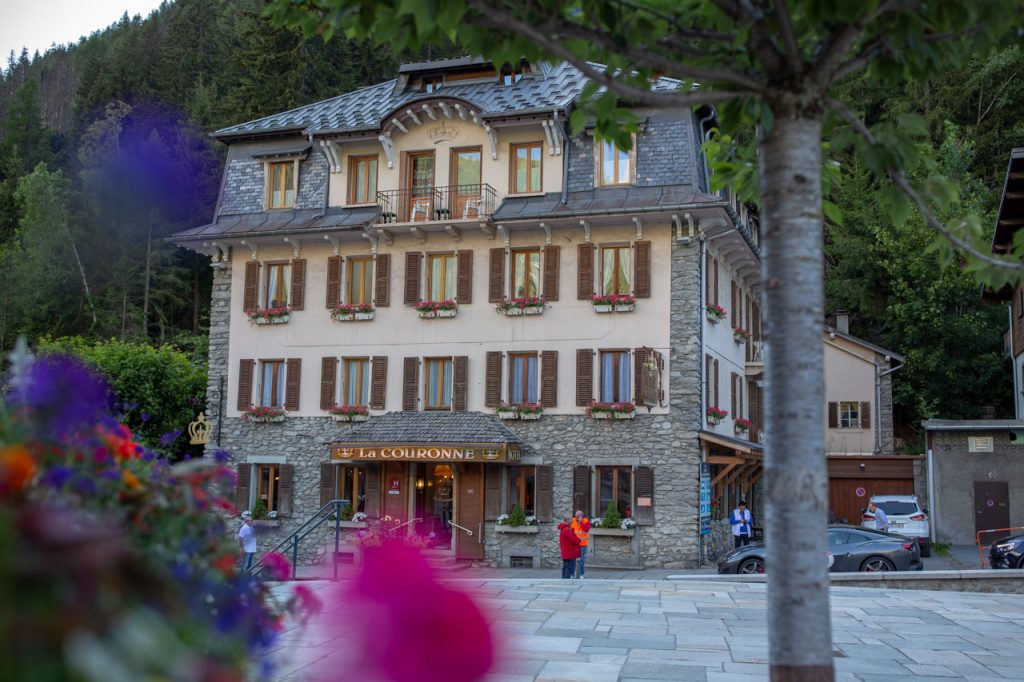
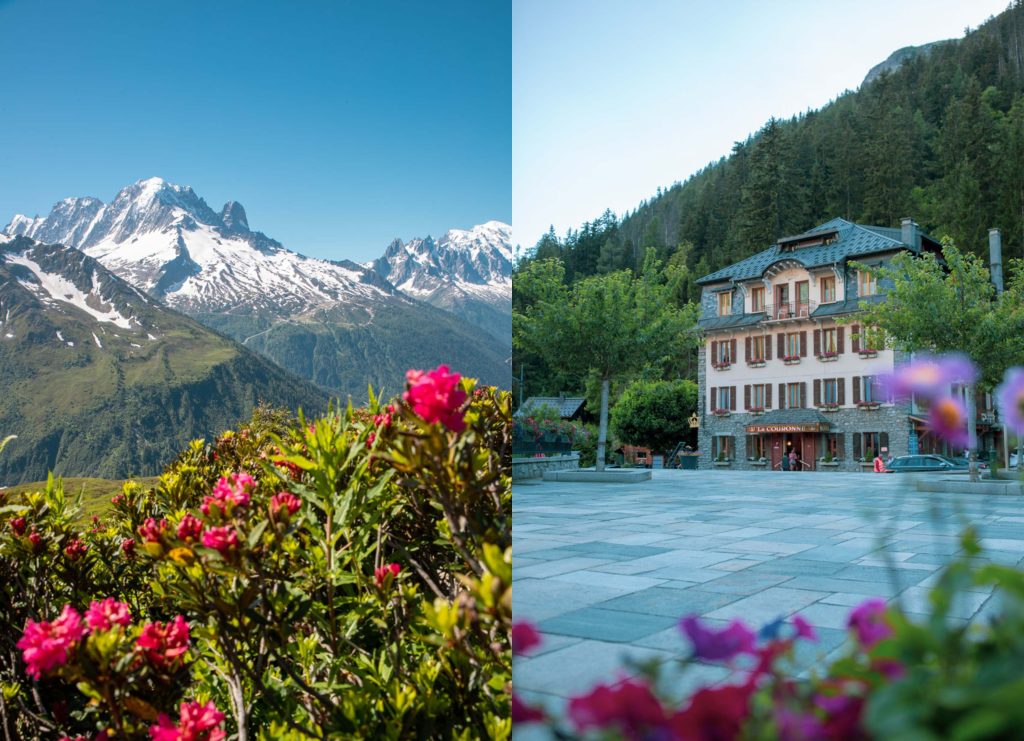
From home, we had been following updates on the web, where local guides report on the condition of the trails at Mont Blanc. The day before our departure, some of the trails – quite unusual for the summer season – were still closed due to snow. In addition, the recommendation was that several paths could only be traversed with the assistance of an ice axe and crampons.
“Ice axe and spiked boots?!”
Gulp! It sounded more like a tool for professionel mountain climbers than necessary gear for a pleasant summer holiday. The only alpine equipment we own is hiking poles, boots, and sunscreen with factor 50. In addition, neither Martin nor I can boast of being seasoned mountain goats.
It is the first time that we attempt to hike so many days in a row and even on a mountainous stretch where the total number of meters of altitude is equivalent to climbing Mount Everest. Normally, however, the route does not require a guide, advanced equipment, or skills as a mountaineer. But now the question is, can we even complete the trip?
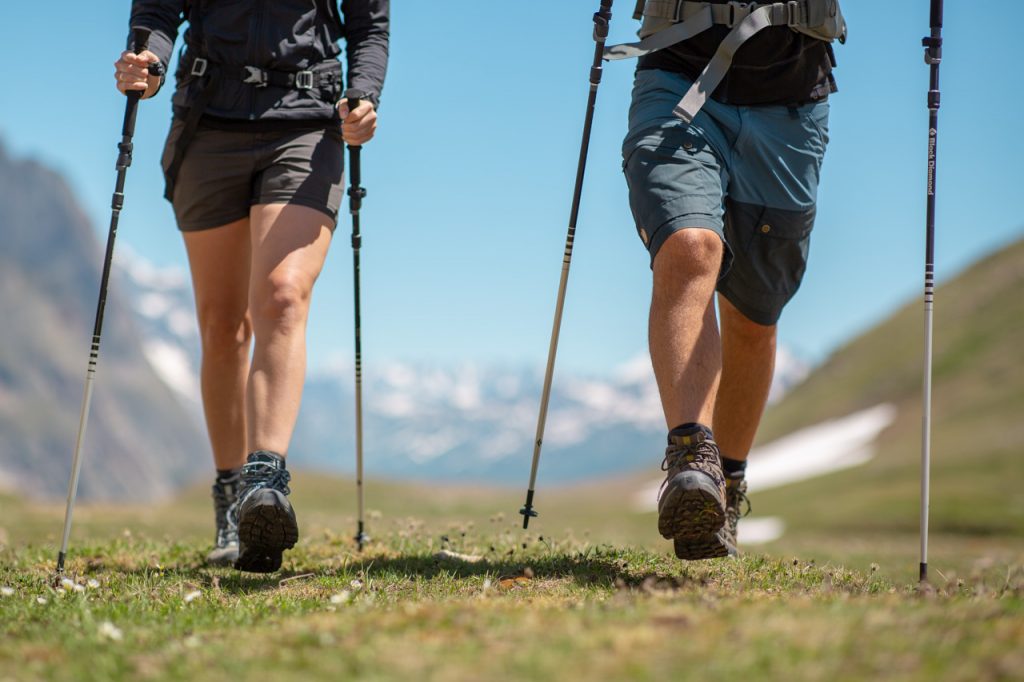
The mountain of death
Every year, Mont Blanc attracts thousands of people who love to hike, cycle, ski, and climb the snowy peaks. Around 100 people summit the 4.808 m high peak daily every summer. So, although Mont Blanc is far from being among the peaks of the world’s highest mountains, the French Alps are one of the climbers’ favorites.
This popularity has also meant that Mont Blanc is the mountain in the world that has cost the most humans their lives. Since it was first climbed in 1786, more than 2.000 people have died attempting to summit. By comparison, around 300 people have lost their lives on Mount Everest – the world’s highest mountain at 8.848 m.
The many fatal accidents has given Mont Blanc the nickname: Mountain of death
The large death toll on Mont Blanc is mainly due to three things. It is neither difficult to travel to Mont Blanc, technically difficult to climb, nor does it require any special permits. This attracts many hopeful people without sufficient experience and preparation to make the attempt. Although we do not have to climb the summit, the certainty of the many deaths has planted a good portion of respect in us.
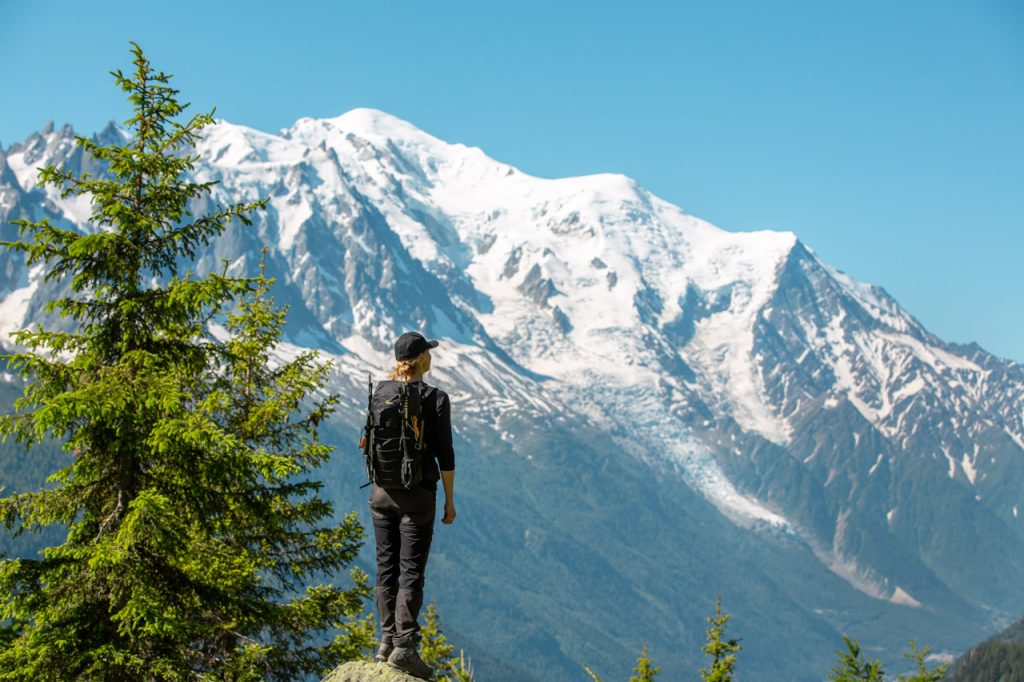
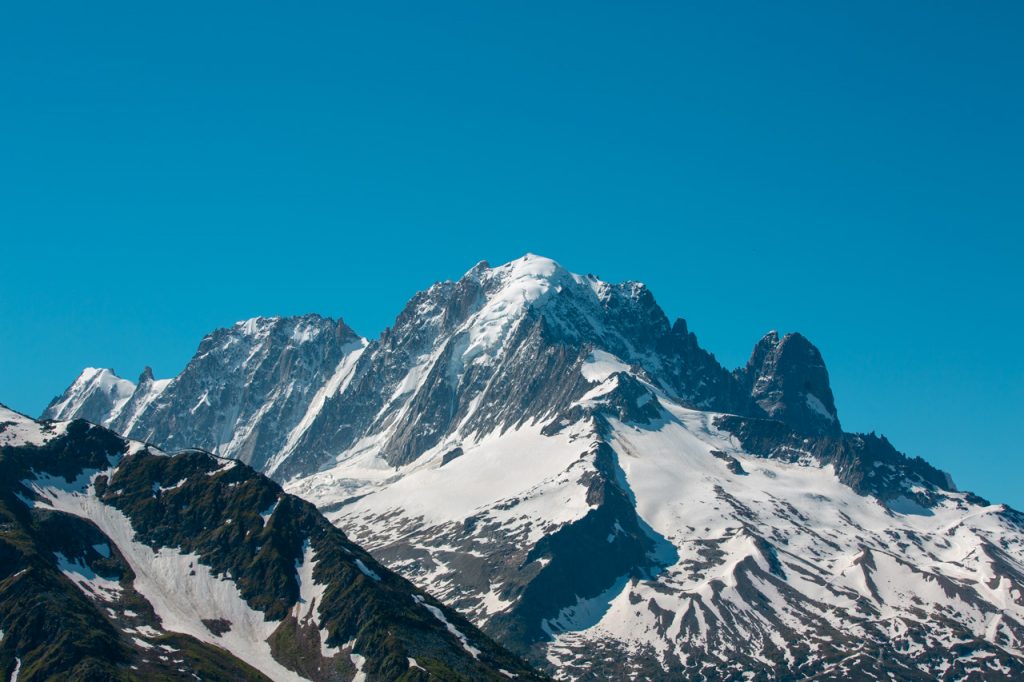
The white king of the Alps
The wooden floor creaks as we squeeze out of the small lift on the hotel’s second floor like two heavy-packed donkeys. With each of our large duffel bags on our backs and a smaller rucksack hanging on our chests, we have our hands free to open the bedroom door.
Fortunately, when the actual hike commences, we only have to carry the small rucksack. We have chosen a so-called comfort version of the trek, where the travel agency transports the large luggage from cabin to cabin. So, we only have to carry lunch, drinks, sunscreen, and personal things on the route.
The room is small but cozy. Above the bed hangs a photograph of the same grandiose mountains that steal all the attention just outside our window. Mountains are acutely fascinating, and to many people, they have the same seductive effect as the song of the sirens. For now, it is not the dream of reaching the top that draws us. It is purely the fascination of being able to walk in a circle around Europe’s highest mountain that has lured us away.
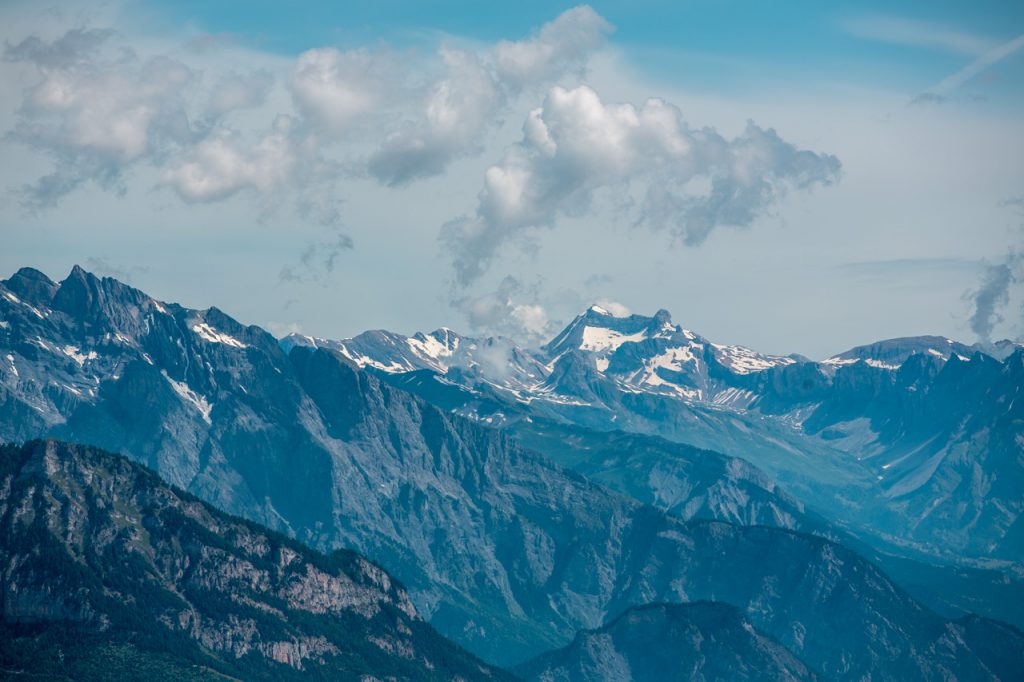
“Say what?”, you might be thinking. Is Mont Blanc the highest mountain in Europe? Geographically, it is actually unclear. There are different views as to whether the Caucasus Mountains are in Asia or Europe. And if you are among the supporters of the latter, Mont Blanc is only Western Europe’s highest.
We chat about the highest debate while looking at the mountain scenery outside our window. It’s huge! So, at this very moment, we are clearly supporters of the statement that truth depends on the eyes of the beholder. For us, Mont Blanc is not only the highest mountain in the Alps. It is undoubtedly also the highest in Europe. That only makes the eagerness to complete the hike even greater.
A landscape of mountains
If you look at Mont Blanc (or Monte Bianco, ‘The White Mountain’, as the Italians call it) you may not see an iconic beauty, like the free-standing Kilimanjaro or cone-shaped Fiji. The top is flat, wide, and can be difficult to spot. The mountain is part of a larger massif, which adds rock, snow, and ice to 40 other rival peaks that bulge more than 3,000 meters into the sky.
This is precisely why Mont Blanc is a wildly impressive sight. On a hike around the mountain, the view is ever-changing and constantly alluring. In addition, the massif lies like an elongated blob of butter between three countries, which are the epitome of an alpine idyll, breathtaking landscapes, and good food. So, it’s not hard to understand why the Tour du Mont Blanc is among the world’s most famous hiking routes.
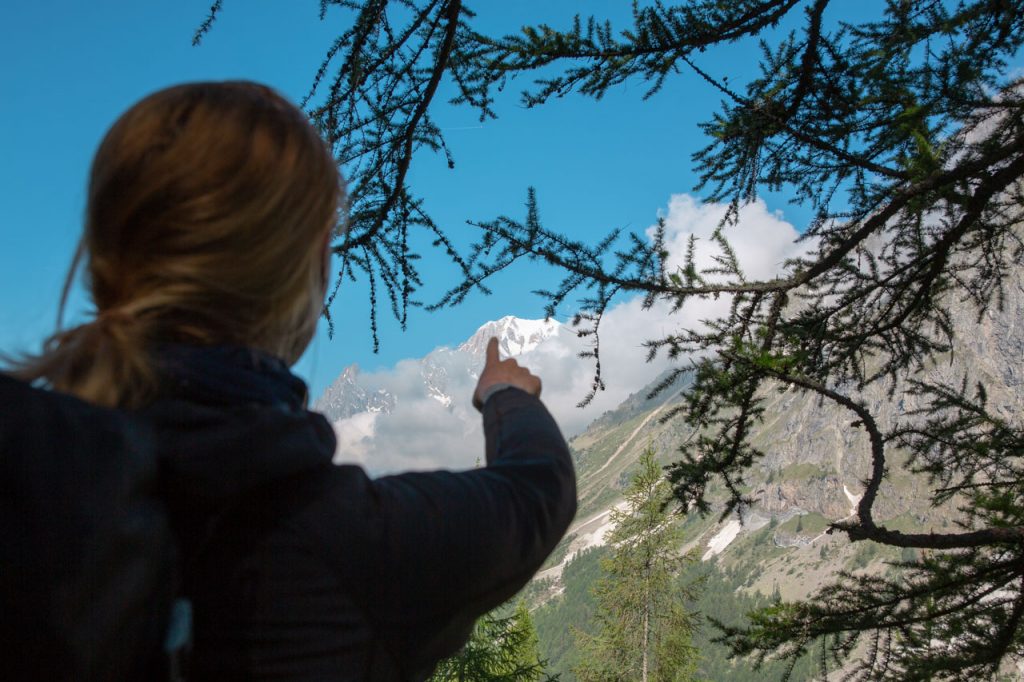
Thought before tour start
In the past few years, we have gone on a few hikes. We have, to put it mildly, become excited about the type of holiday. Especially for hikes in the mountains that combine physical challenges with great nature experiences. They make it amazingly easy to forget everything that rhymes with everyday life.
The Tour du Mont Blanc will be our biggest hiking adventure to date, and from our room, we now have a view of the mountains that will be our companions for the next seven days. They tower majestically above the small mountain town, their snow-white peaks adding a visible thrill factor to our trip. We are really excited about what awaits us in terms of experiences and challenges:
• Will legs and feet stand up to the pressure?
• Gear – do we have it under control?
• Have we packed too few or too many clothes?
• Can we find our way in the mountains?
• Should we cancel the trip because of snow?
Ultimately, these are some of the considerations that make hiking a great experience. It is impossible to know what lies ahead. Both in terms of challenges and experiences. But basically, we can’t do much other than take one day at a time and put one foot in front of the other. And that’s what we intend to do tomorrow …
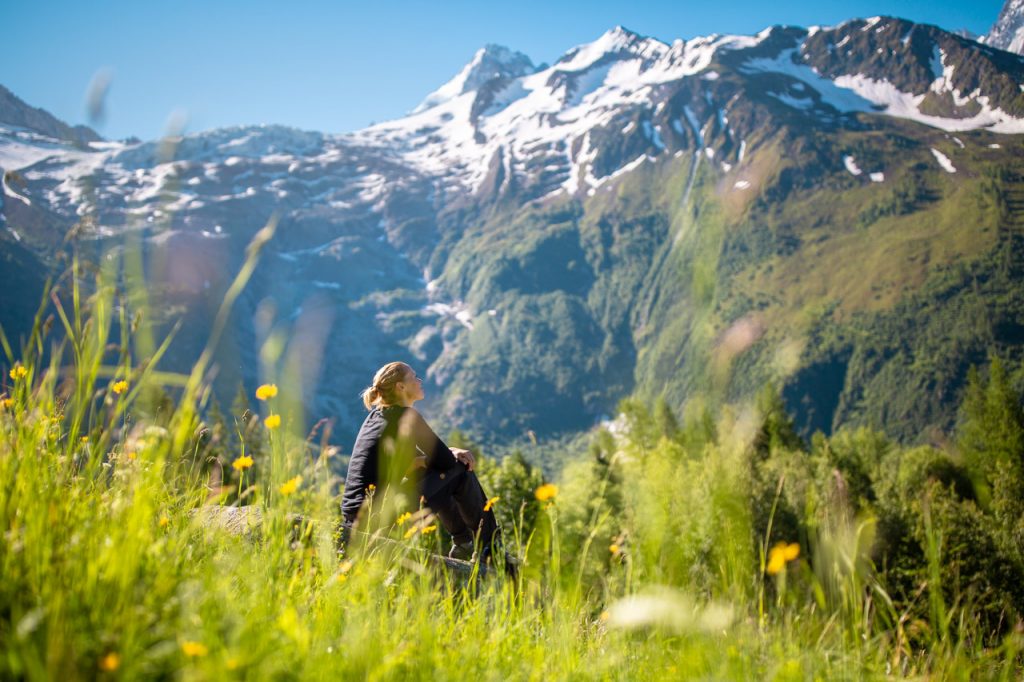
Useful links
- Accomondation in Argentière: Hotel de la Couronne
- Transport from Geneve to Chamonix: Mountain Drop-Offs
- Tour du Mont Blanc: Official info about TMB

